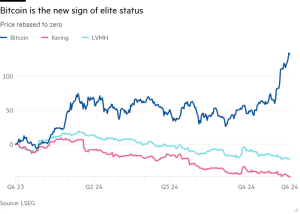Cities on screen: Venice on film
This article is part of a guide to Venice from FT Globetrotter
Venice was the first true movie star. Travel back to 1896, and pioneers the Lumière brothers had newly dazzled Paris with the world’s first film show: scenes of daily life, shot with a stationary camera. But cinema history was made all over again when their assistant Alexandre Promio came to Venice. Where the Lumières had simply fixed a camera in place, Promio put it inside a gondola, gliding down the Grand Canal. Venice now unfurled before the audience. The pictures themselves were suddenly in motion.
Over a century later, the city and cinema are still inseparable. The film festival that brings hyper-glamour each September is just part of what binds the city and the art form. Consider too the essential Venetian movies: tales of doomed love and intrigue that could only have been set in La Serenissima. And so we present our favourite Venice films, each the ideal way to experience the city without contributing to overtourism.
‘Don’t Look Now’ (Nicolas Roeg, 1973)

“The beauty of Venice rose before them, sharply outlined against the glowing sky,” wrote Daphne du Maurier in the short story adapted by Nicolas Roeg for two of the most timeless hours in cinema. Grand maverick Roeg brought tourists played by Donald Sutherland and Julie Christie to the city, still mourning the death of their young daughter. But aside from fracturing his storyline, he played teasing games with Venice too: shooting out-of-season in a stark winter for a haunting mood of melancholy, sex and horror.
Instead of a sightseeing tour, he also scrambled our sense of which parts of Venice deserve our attention. Out-of-the-way church San Nicolò dei Mendicoli played a critical role. Meanwhile, the fame of other locations took on extra dimensions through the film. The fateful ornate gates through which Sutherland follows a small red-coated figure, for instance, actually lead to the (unseen) Palazzo Grimani museum.
Where to watch: Amazon Prime, Apple TV, YouTube
‘Death in Venice’ (Luchino Visconti, 1971)

Another chase awaits in Death in Venice, adapted from Thomas Mann’s novella of obsessive desire. But unlike Don’t Look Now, director Luchino Visconti makes a feature of the city at its most luxurious and celebrated. The backdrop is the Lido, with Dirk Bogarde’s ailing composer staying at the opulent Grand Hotel des Bains.
But in a deeply curdled movie, disorientation lurks too, as his literal pursuit of a teenage boy, Tadzio, leads to frantic confusion behind La Fenice opera house. The final scene of Bogarde on the beach is hard to shake: the price of desire laid bare amid Venetian splendour.
Where to watch: BFI Player, Amazon Prime, Apple TV
‘Summertime’ (David Lean, 1955)

Like Death in Venice, Summertime has a lot to say about loneliness. Yet the outcome is sunnier: bittersweet but still a Technicolor blast. “She came to Venice a tourist and went home a woman!” went the tagline. “She” was Katharine Hepburn’s middle-aged Jane Hudson, arriving from Ohio to take in Piazza San Marco, Campo San Barnaba and more.
The film was that rare beast in the 1950s, one shot wholly on location, with each Venetian landmark the real thing. And giddy as the movie was, it was also self-aware. It caused a reported spike in tourism, but director David Lean had already nodded on-screen to the hordes of sightseers flooding out from Santa Lucia station. Behind the scenes, there was also a warning to tread carefully: Hepburn would reputedly suffer from a chronic eye infection for the rest of her life after being filmed toppling into a canal in Campo San Barnaba.
Where to watch: Amazon Prime, Pluto TV
‘The Comfort of Strangers’ (Paul Schrader, 1990)

Like a mob of tourists descending on the city, a small army of gifted actors and filmmakers pitched up in Venice for psychodrama The Comfort of Strangers. The director was the caustic Paul Schrader, adapting a novel by Ian McEwan, with a script by Harold Pinter. But where McEwan left nameless the city of his book, the movie openly unfolded in a Venetian labyrinth of canals and carnality — a tale of two couples, sexual secrets and death.
The drifty young pair played by Rupert Everett and Natasha Richardson stayed in the Hotel Gabrielli, also host to Donald Sutherland and Julie Christie in Don’t Look Now. As high-end marrieds with strange habits, Christopher Walken and Helen Mirren made a home in the sumptuous Palazzo Loredan dell’Ambasciatore. The costumes were by Armani, and the kinks were abundant. Critic Roger Ebert put it well. Venice, he said, “is the correct city for this material”.
Where to watch: Amazon Prime/MGM+, The Criterion Channel
‘Eva’ (Joseph Losey, 1962)

Before Death in Venice, dark Venetian currents were also set on screen in Eva: another tale of lust and disaster that opens in Piazza San Marco. This time, the man obsessed was a sharp-elbowed Welsh novelist, fixated with indifferent call-girl Eve, played by Jeanne Moreau. Director Joseph Losey’s vision took in the Venice Film Festival, just one among many local wonders. But like other filmmakers who would come after him, he took pleasure in visually capturing a Venice emptied of people and cold to the touch.
Where to watch: Hulu, The Criterion Channel
‘Fellini’s Casanova’ (Federico Fellini, 1976)

It might seem perverse to make room on this list for a movie shot entirely in Rome, but Fellini’s Casanova still makes the cut. For one, the maestro spent an eye-popping $7mn turning soundstages at Cinecittà studios into a likeness for 18th-century Venice. For two, Casanova is an older Venetian story than anything else here. And thirdly, the result makes an unlikely companion piece to Don’t Look Now, with Donald Sutherland in Venice once more, but now cast as the great lover, gaunt and wearing too much make-up.
Where to watch: Blu-ray
‘Senso’ (Luchino Visconti, 1954)

Historical Venice was also the setting for Senso, a ripe melodrama of war and heartache in 1866. La Fenice opera house appears early on, before romance blooms between a lovestruck contessa and a square-jawed lieutenant from the occupying Austrian army. Visconti named him Mahler in tribute to the same composer whose work he would later make central to Death in Venice. The film had a second legacy too. When La Fenice was destroyed by arson in 1996, the film was referenced for the reconstruction.
Where to watch: Rai Play, DVD/Blu-ray
‘Casino Royale’ (Martin Campbell, 2006)

Sean Connery took a gondola in From Russia with Love. In Moonraker, Roger Moore tangled with a goon up St Mark’s Clocktower. But Bond visited Venice most memorably in Daniel Craig’s first outing in the role, Casino Royale, whose final act took place along the Grand Canal. Fans will remember that deep into the story, Bond quit MI6 for a partnership with sweetheart Vesper Lynd (Eva Green). The scenery included the Mercato di Pesce (Fish Market) at Rialto and the Gothic Palazzo Pisani. But romantic contentment was fleeting — and the Venetian waters soon intervened.
Where to watch: Amazon Prime, Apple TV
‘Italian for Beginners’ (Lone Scherfig, 2000)

Lone Scherfig’s sweet-natured comedy Italian for Beginners gave Venice another late cameo — but the outcome was a long way from a Bond movie. Instead, the film was made under the impish rules of the Dogme 95 movement co-founded by filmmakers Thomas Vinterberg and Lars von Trier. The very first of those rules insisted all Dogme films be shot on location. So when the story took a gaggle of Copenhagen language students to Venice, cast and crew went too, complete with a snapshot for the characters outside the Doge’s Palace.
Where to watch: Apple TV, DVD
‘Othello’ (Orson Welles, 1951)

Orson Welles was still a young man when he arrived in the Venice of 1949. Less than a decade after Citizen Kane, he was here to direct and star in an ill-fated version of Othello. The film would be shot in stop-start fashion for the next three years, beset by money crises and released piecemeal around the world when finally finished. Still, the result was often striking — not least when it involved the stunning Palazzo Contarini del Bovolo, with its external spiral staircase. (More uncomfortable to see now is Welles wearing a form of blackface for the title role.)
The whole experience would be retold in Welles’ last complete film, the 1978 documentary Filming Othello. It too seemed a little cursed. A trove of lost footage was discovered only years later. Those scenes found the older Welles waving flamboyantly to curious crowds from a gondola on the Grand Canal. If the sight looked familiar, it wasn’t so different from the shot pioneered by Alexandre Promio back in 1896 — the one that set rolling the story of Venice on film.
Where to watch: Amazon Prime, Apple TV, The Criterion Channel
What’s your favourite film set in Venice? Tell us in the comments below. And follow FT Globetrotter on Instagram at @FTGlobetrotter
Cities with the FT

FT Globetrotter, our insider guides to some of the world’s greatest cities, offers expert advice on eating and drinking, exercise, art and culture — and much more
Find us in Venice, Paris, Rome, London, Tokyo, New York, Frankfurt, Singapore, Hong Kong, Miami, Toronto, Madrid, Melbourne, Copenhagen, Zürich, Milan, Vancouver and Edinburgh
#Cities #screen #Venice #film






